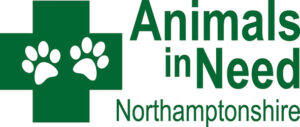The ‘bird hospital’ that is a flyaway success!
Posted 18th August 2021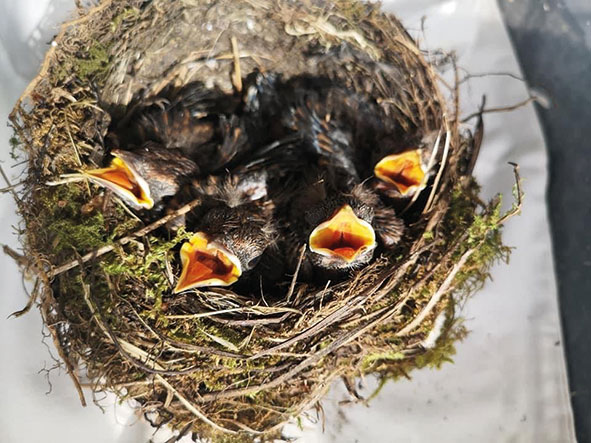
All too often our feathered friends get themselves in a flap, and when they do, they need the help of Animals in Need (AIN). Sammy Jones flew over to the Little Irchester hub for this month’s instalment on the rescue centre…
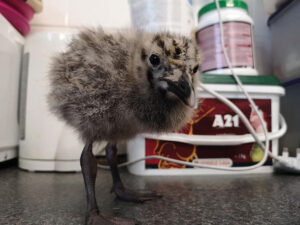
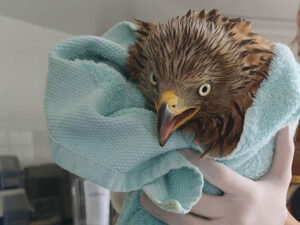
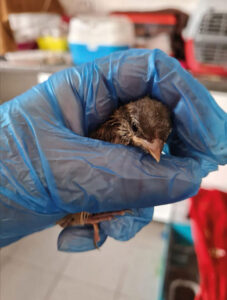
We all know the saying ‘as free as a bird,’ but they aren’t always that free.
From getting caught up in a carelessly discarded fishing hook, becoming confused, losing their bearings and winding up in difficulties, there are all manner of troublesome issues for them to contend with.
If they are lucky, those in peril will be greeted by AINs bird expert Lizzie Collins who has been working for the charity for the past nine years.
“I was looking for a rescue local to me that had the same ethics, and it had to be a place where each animal truly had a fighting chance at being rescued and rehabilitated, regardless of the species,” she says, explaining how AIN took her heart.
They get so many calls to rescue injured birds that Lizzie struggles to add them up: “It’s difficult to say how many we get,” she admits, “It is a lot, way into the hundreds…”
And even when they are in need of rescue, trying to catch a beaky bird that doesn’t want to be caught can prove challenging!
“Rescues can be really tough – especially if they can still fly and you are trying to catch it, perhaps because it has something stuck on or around the beak or legs, or it might be a waterbird that can swim way out into large areas of water – even when injured they still have the edge over us!
“Pollution, accidents and sadly cruelty are all reasons that we get called out on a regular basis.
“Last year we were called out to a large diesel spill at a local lake, and found 100s of birds covered in oil. It was a desperate sight, and sadly we weren’t able to save all of them, but overall it was a huge success and we were able to rescue the majority.”
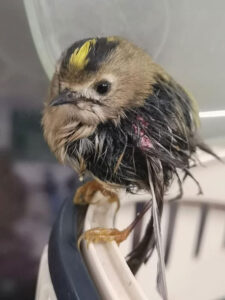 Giving flight to a baby Goldcrest
Giving flight to a baby Goldcrest
“This little beauty is a baby goldcrest who was the victim of a cat attack, although I don’t want to shame cats too much!
He had a little fracture, so we cleaned the wound and strapped it, and fed him on a formula called Nutribird at first. Later, we offered a diet of crushed up mealworms and millets. He made a full recovery.”
And while accidents might be upsetting, few things rattle the rescuers more than the revulsion of humans.
“Last month we were called out to two beautiful young pigeons that had been thrown from a balcony – whoever owned the flat just didn’t want them there. One of the birds died, but we successfully reared and released the other.
“Being called out to cases of abuse is horrendous. It’s difficult to put it into words. I lose a lot of faith in humanity. When you deal with the abuse of a bird or an animal it is very demotivating and it’s difficult to remain professional, but you have to focus on the job in hand.”
But there are some perils that are common and expected – and puddy-tats are responsible for more than their fair share of the carnage.
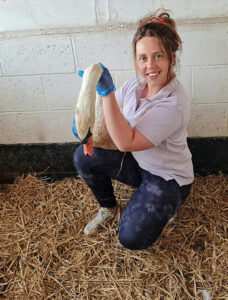 “The most common injuries we see are babies that have been attacked by cats,” Lizzie says, “We must have treated somewhere in the region of 40 species of birds. We see so many different types during the spring and we see them from the egg which goes straight into our incubator, right through to the adults.”
“The most common injuries we see are babies that have been attacked by cats,” Lizzie says, “We must have treated somewhere in the region of 40 species of birds. We see so many different types during the spring and we see them from the egg which goes straight into our incubator, right through to the adults.”
Despite seeing so many different birds, there are always the occasional unexpected hospital guests.
“I once looked after a northern gannet, and he was way off course – they are more likely to be found on the cliffs of North Scotland! I’ve also had two peregrine falcons. I never thought I would see one of those up close. It is sad that we only see them when they are injured, but I love being able to make a difference. We have a lot of buzzards who have been in RTAs and sparrowhawks who have flown into shiny windows. We have the odd red kite too.
And these are not easy patients!
“Definitely not,” Lizzie laughs, “Their talons are super sharp and cut through flesh, so they have no problem at all in cutting through our skin!”
Swans are regularly admitted to AIN: “They definitely keep us on our toes, and the main reasons are road traffic accidents, and flying into power lines. We are called out weekly for those. They are so feisty too – you never meet a placid swan!”
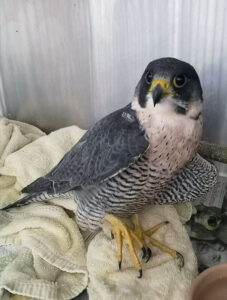 But treating a bird must be a tad different to helping a puppy to recuperate…
But treating a bird must be a tad different to helping a puppy to recuperate…
“When the injured bird is admitted to the wildlife hospital they have a full check over to assess the injuries that have been sustained, and more often than not antibiotics will be prescribed, together with pain relief and some nice food.
“I truly believe they do realise we are trying to help them, but that only comes after a few weeks of being with us,” Lizzie thinks, “…at first they are naturally very scared.”
And not all birds take to the treatment like erm, ducks take to water.
“Some remain very defensive and scared, and that’s natural – they are wild, after all. We try to keep everything as quiet and calm as possible so that their rehabilitation is more bearable.
“Once I am sure the birds have no disease, I like to put them together in aviaries in matching age groups. It means they have companionship and a feeling of safety. I know from experience that it really helps them with their recovery.”
But of course recovery isn’t a given. Sometimes, nothing can be done to save our feathered friends.
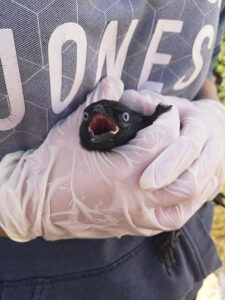 “In that situation we administer pain relief and make them comfortable until they pass away. It is always sad, but it is absolutely worth bringing a bird to us, regardless of its injuries. If we can’t save it, we can ensure that its end is calm and peaceful – it is the last act of kindness we can provide. We never put down any bird unless it is absolutely vital.”
“In that situation we administer pain relief and make them comfortable until they pass away. It is always sad, but it is absolutely worth bringing a bird to us, regardless of its injuries. If we can’t save it, we can ensure that its end is calm and peaceful – it is the last act of kindness we can provide. We never put down any bird unless it is absolutely vital.”
We can all play our part to help the bird population in our vicinity; with changing climate, habitat being decimated and all the aforementioned obstacles, bird life can be tough.
Lizzie said: “There are many ways people can help their local bird population. A big one is to be extremely cautious when gardening; when cutting back hedges, or cutting down trees, for example, always check for nests first,” she advises.
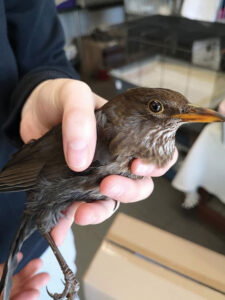 “Another is to provide support feeding on stations that are in wide open spaces, which allow the birds to see oncoming predators.”
“Another is to provide support feeding on stations that are in wide open spaces, which allow the birds to see oncoming predators.”
Granted, birds won’t sit on your lap or play fetch the ball, but to overlook them is to miss out on their wonder.
“Sometimes I feel that because they aren’t as cute and cuddly as some of the animals here, they are underappreciated. But they play a vital part in our ecosystem, and are highly intelligent – take the corvid family for example; they are very smart and capable of solving complex puzzles.
“They can even recognise up to 50 faces!”
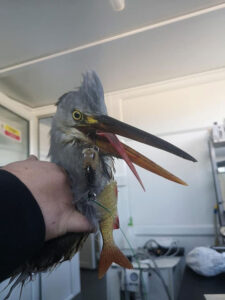 Unhooking an unhappy heron
Unhooking an unhappy heron
This poor heron was found at Rushden Lakes – he had spent a few days frantically trying to fly and wasn’t in a great state at all. Thankfully, a member of the public managed to corner and grab him.
He was brought to the hospital and it was clear what the issue was – he had a hook and fish straight through his tongue, which would have been incredibly painful for him.
I would rather people didn’t fish at all, but if they do, simply by taking their hooks and material home with them would prevent these injuries.
We had to numb the tongue and then had the difficult job of removing the hook. It was awful. He was put on antibiotics and force fed – if we hadn’t done that he wouldn’t have survived.
We simply can’t release a bird until we are 100% certain that any infection has cleared, and that the bird is able to fend for itself.
I’m pleased to say that he did recover, but he ended up spending several months with us – and it was all completely preventable.”
To find out more about AIN’s work visit: www.animals-in-need.org
